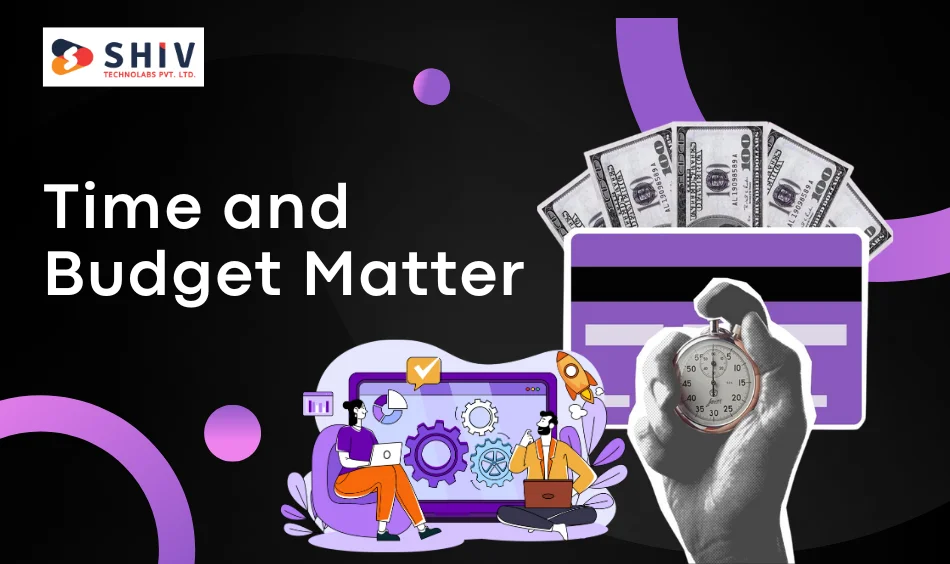Table of Contents
Building tech teams fast is a real challenge. Deadlines are tight. Hiring delays can slow your entire project. On top of that, onboarding full-time employees increases fixed costs.
This is where IT staff augmentation steps in. It gives you access to skilled developers and engineers without going through long hiring processes. Businesses use this approach to bring in outside talent for short or mid-term needs.
Instead of waiting weeks to fill a position, you can plug talent gaps in days. It helps you reduce costs, save hiring time, and complete projects on schedule.
In this blog, we’ll cover the 5 key benefits of staff augmentation that directly impact your timeline and budget. Whether you’re running a mobile app project or migrating to cloud infrastructure, this hiring model can give you the speed and flexibility you need.
What Is Staff Augmentation in IT?
Staff augmentation is a flexible hiring model. Companies use it to bring in external professionals for a limited time. These resources work under your direction, just like full-time employees—but without the overhead.
For example, if your in-house team lacks DevOps skills, you can hire a DevOps expert for just the sprint duration. This model helps you get specialized support without expanding your core payroll.
Many firms use IT staff augmentation during peak project phases. It helps fill skill gaps, speed up delivery, and handle overflow work. Unlike outsourcing, you keep full control of your projects. The hired resources work as part of your internal team.
Traditional Hiring vs. IT Staff Augmentation
| Aspect | Traditional Hiring | IT Staff Augmentation |
| Time to Hire | 4–8 weeks | 1–2 weeks |
| Cost Involvement | Salary, onboarding, benefits | Hourly or monthly contract rate |
| Flexibility | Low | High |
| Project Fit | Long-term roles only | Short or long projects |
| Skill Availability | Limited to local pool | Global talent access |
| Exit Process | Complex (HR, legal) | Simple contract end |
This model works especially well for tech projects. It allows companies to scale their teams without the long commitment. Plus, it helps avoid delays caused by hiring bottlenecks.
Why Time and Budget Matter in Tech Projects

In fast-paced software teams, time is money. Every delay in hiring pushes your launch back. Every unfilled role reduces team performance. The cost of a late project can be significant—missed revenue, unhappy clients, and poor user feedback.
That’s why how staff augmentation saves time and budget matters so much.
Here’s how it affects both:
- Hiring Time: Traditional hiring may take a month or more. Staff augmentation cuts that down to a few days. This allows your team to continue building without gaps.
- Training Time: Most augmented staff come pre-skilled and experienced. You don’t have to train them like new hires.
- Budget Efficiency: You only pay for what you need. No overhead. No benefits. No downtime pay.
Whether you’re building a fintech product, updating an existing tool, or fixing bugs post-launch—staff augmentation helps you act fast without overextending your budget.
5 Benefits of Staff Augmentation That Save Time and Budget
Let’s look at five core reasons why businesses prefer staff augmentation for tech projects. Each point highlights how this model supports faster delivery and cost control.
1. Faster Hiring Process
Finding skilled tech talent takes time. Shortlisting, interviews, onboarding—it all adds up. This delay can hurt your project flow.
With staff augmentation, the timeline changes. You get pre-vetted developers who are ready to start. Some firms can deliver candidates within 48 hours.
Instead of running full hiring cycles, you fill roles almost instantly. This is ideal when your project is already in motion and you can’t afford downtime.
The result? You cut hiring time from weeks to days. That’s a big advantage when you’re racing against deadlines.
2. Lower Long-Term Costs
One of the biggest advantages of this model is its cost flexibility. Full-time hires come with extra expenses—insurance, payroll tax, workspace, hardware, training, and more.
Staff augmentation cuts that out. You pay only for the hours or months you use. There are no extra commitments after the project ends.
For startups or growing teams, this model is useful. It prevents fixed monthly costs from stacking up when business needs change.
Example: A SaaS company building an analytics module may need a data engineer for three months. Hiring someone full-time doesn’t make sense. Staff augmentation is the smart alternative.
3. On-Demand Team Scaling
Every tech project has phases. You don’t need the same number of people all the time. One sprint may need a full team. The next may need just a few.
Staff augmentation allows you to scale up or down as needed. It’s flexible. You add resources for peak demand and reduce when the phase ends.
This helps maintain delivery speed. You meet release goals without putting stress on your core team. There’s no need to overhire or stretch your current developers.
It also works well for multi-project teams. You can split your focus by assigning short-term talent to one module while your main team works on another.
4. Specialized Skill Access
Some projects need rare skills—like machine learning, blockchain, or system architecture. These are hard to hire full-time, especially on short notice.
Staff augmentation gives you access to these skills when and where you need them. You can bring in developers who’ve already worked on similar tools.
This is useful when launching new features or entering unfamiliar tech stacks. You avoid trial and error, save time, and reduce rework.
For example, if your product suddenly needs a payment gateway with PCI compliance, hiring a contract-based expert can save weeks of effort.
5. More Focus on Core Product
When your team juggles too many things—hiring, training, and development—it hurts your final product. Augmented staff remove that burden.
They take care of assigned tasks, letting your internal team focus on high-value modules. You don’t get stuck in long onboarding or people management loops.
You also reduce distractions. There’s no pressure to train, manage payroll, or handle paperwork for temporary roles.
In short, you get the talent you need, only when you need it—without slowing down your main roadmap.
Quick Recap: Key Benefits at a Glance
| Benefit | How It Saves Time | How It Saves Budget |
| Faster Hiring | Skip full cycles; onboard in days | Fewer HR and admin costs |
| Lower Long-Term Costs | No full-time payroll process | Pay only for contract hours |
| On-Demand Scaling | Add/remove devs as per sprint need | Avoid overstaffing and idle resources |
| Specialized Skills Access | No training time; hit the ground fast | No need for high-salary niche hires |
| Focus on Core Product | Less team overload | Minimize wasted hours on admin tasks |
Staff Augmentation vs Traditional Hiring: A Quick Comparison

Choosing between full-time hiring and staff augmentation depends on your project goals. But when speed and budget matter, augmentation often proves more efficient.
Let’s compare both approaches side by side:
Staff Augmentation vs Traditional Hiring
| Criteria | Staff Augmentation | Traditional Hiring |
| Time to Onboard | 1–2 weeks | 4–8 weeks or more |
| Initial Cost | Low | High (recruitment, onboarding, training) |
| Flexibility | High (scale up/down easily) | Low (long-term contracts) |
| Commitment Level | Short- to mid-term | Long-term |
| Access to Skills | Global talent with niche expertise | Limited to in-house or local hiring |
| Exit Process | Simple, contract-based | HR formalities and legal compliance |
| Suitable For | Agile projects, short-term spikes, niche roles | Stable, long-term, core roles |
Companies in software development, mobile apps, and cloud-based platforms benefit most from staff augmentation. It allows you to match the pace of development without going over budget or extending timelines.
If your projects involve rapid delivery cycles, frequent tech updates, or modular work, this model fits well.
Final Thoughts: Why Staff Augmentation Works
Tech teams work best when they stay focused. Hiring delays and budget overruns break that momentum. That’s why more firms now rely on IT staff augmentation.
This approach removes friction. It speeds up hiring, cuts fixed costs, and gives you room to adapt. Whether you’re expanding your SaaS platform or starting a product from scratch, it gives you faster access to the right people.
More importantly, it reduces risks. You avoid long-term hiring mistakes while still delivering work on schedule.
If your company deals with tight budgets or growing product backlogs, this model is worth considering.
At Shiv Technolabs, we provide flexible staff augmentation services tailored to your tech stack and delivery needs:
- Hire pre-vetted developers across web, mobile, cloud, or AI
- Start in days—not weeks
- Scale your team without long-term overhead
- Stay in control of your project and codebase
Contact us to schedule a free consultation or get a quote based on your project goals.




















